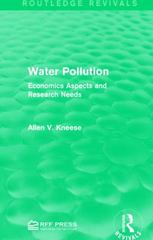Hi, can you please answer all the following steps and show all working out with the formulas that you used as well, thank you. The Question has a slight change from the pervious year
The government is about to undertake a large program of public works, repairing and upgrading bridges around the city. The Ministry of Transport has decided that the public works will be funded, in part, by a new tax on taxi companies. The government's rationale for the new tax is that taxi operators benefit from well maintained roads and bridges, and therefore should contribute to their upkeep. o The Ministry has developed two alternative proposals for the new taxi industry tax: 1. The first proposal is to levy a tax of $2.40 per taxi trip. (Note: This tax would increase each company's marginal cost by $2.40.) 2. The second proposal is to levy a lumpsum tax of $50,000 per day, on each taxi company, regardless of the number of taxi trips it provides to consumers. (Note: This tax would increase each company's fixed cost by $50,000.) Taxi companies oppose both proposals. In a submission to the Ministry, the companies claim that a new tax will not have the intended effect. The companies state that they will have no choice but to pass the cost of a new tax on to consumers, in the form of higher prices, and that consequently the burden of the tax will fall on their customers, not the companies themselves. 2.1 Your task The Minister for Transport has instructed you to evaluate the two proposals and recom mend which of the two proposals (if any) the ministry should pursue. In your recommen dation you should consider the revenue raised by each proposal, as well as the impact that each proposal will have on both consumers and the taxi industry. In particular, you are to assess the taxi companies' claim that it is consumers who will ultimately bear the cost of any new tax. (The minister is concerned that the public will not support the new taxes if they result in significant price rises.) 2.2 Industry structure Two taxi companies compete in the taxi industry: Gold Top Taxis and Dark Grey Cabs. Every morning the two taxi companies each decide how many taxis to put on the road. These decisions effectively determine the total number of taxi trips that are supplied into the market on that day. Consumers have no apparent preference over taxi companies. Inverse demand in the market has been estimated to be, _ Q P50ifwv where P represents the price of a taxi trip in dollars, and Q is the total number of taxi trips supplied into the market on a given day. The cost characteristics of the two taxi companies have been estimated using corporate accounts submitted to the Ministry of Transport. Gold Top Taxis faces a marginal cost of MCG : $12.50 per trip. Dark Grey Cabs marginal cost is MCD : $14.00 per trip. Both companies incur fixed costs of FCG : FCD : $140,000 per day (regardless of the number of trips supplied). 3.1 Required steps When completing the industry analysis you should assume that firms are engaged in Cournot Competition. Use the subscript G to denote variables belonging to Gold Top Taxis, and the subscript D to denote variables belonging to Dark Grey Cabs. Step 1: Derive the two firms' total cost functions for the case in which there is no tax imposed on the taxi industry. (3 marks) Step 2: Derive the two firms' profit functions for the case in which there is no tax imposed on the taxi industry. (4 marks) Step 3: Derive the two firms' best response functions for the case in which there is no tax imposed on the taxi industry. (6 marks) Step 4: Derive the long-run equilibrium firm quantities, market price, firm profits, and consumer surplus, for the case in which there is no tax imposed on the taxi industry. (8 marks) Step 5: Repeat steps 1 to 4 for the case in which a $2.40 tax per trip is imposed on the taxi industry. (20 marks) Step 6: Derive the long-run equilibrium firm quantities, market price, firm profits, and consumer surplus, for the case in which a $50,000 per day tax is imposed on the taxi industry. (9 marks)








